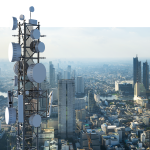Does 5G need a reality check?

Last year, the world saw the first wave of 5G phones launched by leading brands.
These launches suggested a world of 5G was just around the corner, and yet the technology has yet to really impact the enterprise. Ask anyone, and they probably couldn’t give you an answer of how it will be used in practice.
Companies (and countries) are racing at full speed to release the next-gen network commercially. China plans to pour in US$411 billion on 5G mobile networks from 2020 to 2030 to the benefit of its domestic network and smartphone providers.
Speaking at DC5G conference, John Godfrey, SVP of Public Policy for Samsung, said that 5G network are the key to more immersive, seamless connections across device types.
But at present, those are just words, and no shortage of challenges are putting the brakes on the light-speed cellular technology from taking off.
A report by Jabil, which surveyed more than 200 telecommunications stakeholders, found 53 percent agreed that 5G is dramatically more complex than its predecessors, with close to half struggling to find the required talent to develop it.
The complexity is due to its combination of a variety of technologies such as Massive MIMO (Multiple Input Multiple Output), beam-forming, millimeter wave, network slicing, and others.
Adding to the issue, operators may choose to deploy different technologies. One operator may choose to deploy millimeter-wave small cells to provide wider and ubiquitous coverage.
In contrast, a different operator may favor IMO and beamforming technologies over premature millimeter-wave technology.
Investments and developments of 5G technologies are therefore diverged, creating a disparity across the technologies.
As TechHQ recently covered, the 5G revolution is more than a firmware upgrade, but it requires an complete overhaul of modern cellular infrastructure.
A mass deployment of low-powered cellular radio access nodes will be the key to realizing the 5G network dream. Wide coverage will rely on these grey, shoebox-sized devices attached to telephone poles and buildings across the city.
In the United States, there are up to 150,000 cell towers to date. However, to meet the rising mobile data demand and sprint in the 5G race, about 800,000 small cells are expected to be deployed by 2026.
YOU MIGHT LIKE

Why a 5G-powered future needs a small cell revolution
The considerations and challenges discussed so far revolve around the business model and hardware of network providers and industry players.
Interestingly, the ‘5G hype’ is questionable. More than 38 percent of consumers are not excited about 5G’s launch and half of the surveyed respondents are not aware of how and when 5G will roll out.
Instead, consumer interest will only spike after 5G applications are concrete and the world of heightened connectivity is a reality.
Some criticize the applications of a 5G-powered reality, from an exponential of Internet of Things (IoT), smart cities to autonomous driving technologies to be a castle in the sky until substantial implementation is carried out.
Economic success will be powered with tech-readiness at full scale rather than innovation at full speed. At the same time, new business models and revenue sourcing will support the foundations of this ambitious project.
While 5G has been a hot topic, some experts remarked on the lack of substance in the groundwork of 5G would be one of the biggest hurdles in deploying the technology.
If one thing is certain, the complexity of 5G will significantly enhance current technology yet challenge stakeholders in realizing a world of greater connectivity.









